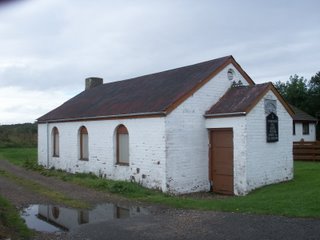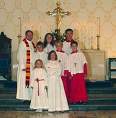
Mission Hall Brora

Well done Phil a casual question about Caithness churches made me get out the Baptist in Scotland book 1988 (edited David Bebbington.) and see what Johnston said about Caithness.
Here is the run down...We have wondered was there a work as far down as Brora and Golspie by Baptists?
Phil asks about Caithness With there 3/4 Baptist Churches with one of them being a newer work - Has there been any other Baptist churches/plants in this area that either haven't taken off or no longer in existence?
Phil
Wednesday, 20 September, 2006
I reply
If you mean Caithness then there is Keiss of course the mother, Wick well established ( I think they got the benefit of strong evangelicals at some point who left the establishment.)
Scarfskerry has a history of lay preachers and another "glasite" aspect - only their pastor will administer the communion ( may have changed now).
Thurso has had two attempts one goes back to the aftermath of Haldanes who made it to Orkney. The more recent Thurso Church was constituted in the 80's. I think there were Quasi -Baptist in Castletown off and on. But not affiliated to the Scottish BU. I am not sure about Cannisbay.
Freswick was preaching station and Stroma Church is now closed.
Bearing in mind the Caithness population has almost halved the Baptist are holding their own - so to speak.
So Caithness Churches and constitution dates
Thurso 1905 - 1840:1982
Scarfskerry 1816
Kiess -1750
and Wick - 1806.
with Stroma and Freswick (preaching station)
Now some months back I was looking at the 1921 revival and how it had effected Brora. Was there Baptists working in Sutherland?
23/2/1922-Northern Times
Revival in Wick
"“The revival in Wick is still progressing John Troupe's presence was an additional attraction, He is now almost well after his illness, but still to refrain from much exertion....one of the converts a young man died recently after a short illness,The hymns and prayers also bearing pathetic terms. A solo sung by Miss Lara Rosie was much appreciated."”
In Johnstons contribution about Baptists in Caithness he states that The famous Jock Troup, cooper - cum- revivalist, was married to one of the Blacks of Stirkoke, long assoicated with Wick (Baptist) Church. Jock was an instrument in the 1921 revival in Wick and elsewhere.
The plot thickens was it then Baptists, that moved south to Helmsdale, Brora, Golspie all the way to the seaboard villages in 1921/1922...








